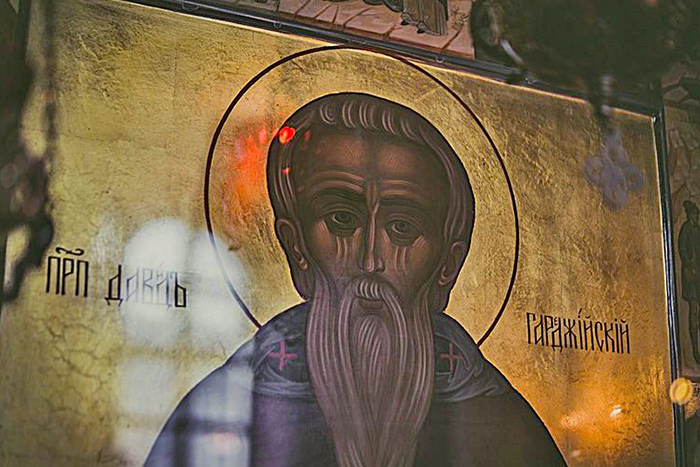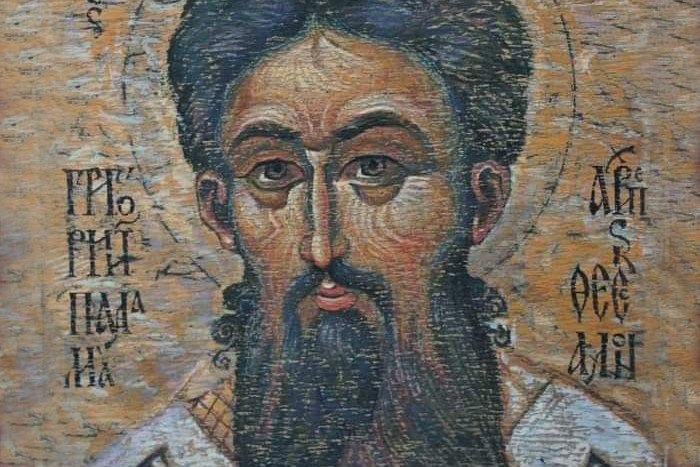
It happened in the sixth century. A group of Syrian monks came to Georgia for missionary purposes. Georgia had been an Orthodox country for two centuries, but Christianity had gained a foothold only in big cities while paganism was flourishing in the surrounding provinces. This was due to the influence of Persians, with whom Georgians had strong trade relations. On the other hand, heresy of monophysitism was spreading.
St. John of Zedazeni, fulfilling the commission of the Mother of God, chooses twelve disciples by lots, and they travel from Cappadocia to Georgia with him. This way of doing missions, based on the example of the twelve apostles, was quite common for missionary work at the time.
The new apostles of Georgia grew up among Syrian monks, who have a special place in the history of Christian asceticism. According to another version, these monks were Georgians, who received their spiritual education in the famous St. Symeon Stylites Lavra and other monasteries in Syria and Mesopotamia, with the aim of returning to their homeland and promoting its Christian enlightenment.
The Assyrian Fathers (as they came to be known) played a great role in the reinforcement of Christianity and perhaps contributed greatly to the establishment of the Georgian Orthodox Church as it now exists.
Of course, the ancient hagiographies of these saints are written according to all the laws of the hagiographic genre, but it can be noted that in many ways the lives of holy monks are somewhat similar in their stages to the earthly life of Christ – there is the forty-day fasting, temptations, and the moment after Pentecost, when they were sent to all parts of the Georgian land to preach, combining their personal example of holy living with the persuasive message. The saints found followers and disciples, and monasteries were soon founded in these places, many of which are still active today.
Among the Assyrian Fathers who came to Georgia on a preaching mission was St. David of Garejeli, the founder of the largest religious center in the Caucasus (until the 20th century), the David Gareji Lavra, the great shrine of the Georgian people.
Even during the life of the saint, people who sought salvation would come to him and settle nearby, carving cells in the slopes of the mountain. By the end of the holy monk’s life, about two thousand disciples had gathered around him.
The name David is the third most popular name in Georgia – after Nina and George, of course. Saint David for Georgians is like Saint Nicholas for Russians: he is a quick helper in any situation. People in Russia pray to him and ask him for help in a very uncommon matter for a monk: he is asked for prayer and intercession for the Lord to grant children or heal from birth-related illnesses.
This is because of a hagiographic legend about the saint: when a woman slandered him, saying that she was expecting a child from the saint, the saint pointed at the woman’s belly with a stick and asked, “Am I your father?” to which the child answered “No” and named his real father.
In memory of this, three springs came out of the middle of a cliff, whose waters are still considered miraculous. Many childless people, who came to the saint as their last resort and bathed in the springs, were then able to give birth to children. The most important thing is that people do not just get rid of infertility. Most often, there is a spiritual transformation going on with them. It is as if St. David is invisibly present at that place and intercedes before the Creator with love and tears for every human soul that comes to him just like it was during his life, which is described in his hagiography.
Every year on the Day of St. David a miracle happens: the holy water, which accumulates in small pools, overflows over the edge on this day, and starts to appear all over the rock in different places and flows out abundantly, which does not happen on other days of the year. This water has one more property: no matter how much of it you pump out, its amount remains the same and it always stays on the same level in those small pools.
The wonder-working “stone of grace” is brought to the temple for the feast. It is the same stone that St. David took from the walls of Jerusalem when he was in the Holy Land. According to the legend, during his earthly life the ascetic wanted to visit the places where the Lord walked. God fulfilled his heart’s desire. However, the saint, in his great humility and sense of unworthiness, dared not enter the Holy City. He only took three simple stones lying on the ground near the city walls and went back to Georgia. Then the Patriarch of Jerusalem was told by a voice from above that “David has taken all grace out of Jerusalem by his faith”. They sent messengers who returned two stones to Jerusalem, and let Saint David bring one stone to Georgia. Miracles happen by this stone with all those who pray to God in faith, in keeping with the words of the Gospel, If ye abide in me, and my words abide in you, ye shall ask what ye will, and it shall be done unto you (John 15:7).



